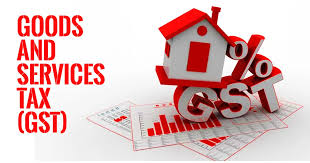Information Technology enabled Services (ITeS), the Central Board of Indirect Taxes and Customs (CBIC) recently came up with the circular no. 107/26/2019-GST clarifying various issues. The said circular has a far-reaching effect on ITeS/BPO, and the same is explained in the present article. Before understanding the clarification, it is significant to understand coverage of two important terms, namely ‘Intermediary’, and ‘Information Technology enabled Services’. The definition of the term ‘intermediary’ is contained under section 2(13) of the Integrated Goods and Service Tax Act, 2017 which means:
- An agent, a broker or any other person who facilitates or arranges the supply of services or goods or both or securities between two or more persons. However, it doesn’t include a person who supplies such services or products or both or securities on his account.
The definition of the term ‘Information Technology enabled Services’ has not been provided under the Goods and Service Tax Law, and hence, reliance has been placed on the definition provided under rule 10TA(e). As per the said rule, ‘Information Technology enabled Services’ means the business process outsourcing services, which are provided with the assistance or use of the information technology.
- The back-office operations; contact centre services or call centres; legal databases; data processing and data mining; insurance claim processing; payroll; creation and maintenance of medical transcription except medical advice; remote maintenance; support centres; translation services; website services; revenue accounting; remote education except education content development; data search integration and analysis are business process outsourcing services. However, it doesn’t include any research and development services.

Types of Services Charged Under GST
- IT services covering public relations and business consulting, network management and IT infrastructure, marketing operations, human resources, hosting, management consulting, etc.
- Installation, repair and maintenance services covering computers, peripherals, equipment, television, and apparatus.
- Internet telecommunication services covering text-based online information, like directories and online books.
- Other IT services, telephone-based support and research and development support in computer sciences.
Applicability of GST on Software and Software Service Supply
GST rules for software and its services are as follows-
- Supply of software in different forms: As per Schedule II of the CGST Act, activities such as the “development, design, programming, customisation, adaptation, upgradation, enhancement, and implementation of information technology software” are classified as the supply of services (No. 5 (2)(d) of Schedule –II of the GST law).
On the other hand, when pre-developed or pre-designed software is delivered in any tangible medium or storage (often referred to as off-the-shelf software) or is made available via encryption keys, it’s treated as a supply of goods, falling under heading 8523. - Online Software Supplies: Supplying computer software online has a distinct classification. Accessing or downloading software, along with its updates, is seen as an OIDAR service. In essence, any online provision of computer software is categorised as an OIDAR service.
- Exemptions: Certain software, particularly those issued by the government, are exempt from GST. Additionally, specific software types have a Nil GST rate, determined by their usage and the beneficiaries they cater to.
- Place of Supply: In-state
- In-State Sales: If both the supplier and recipient are located within the same state, CGST and SGST are applicable.
- Interstate Sales: When the supplier and recipient are located in different states, IGST is applied.
- Import of Software Services: As software imported falls under HSN Code 997331, it’s treated as a service import. Companies or individuals importing software don’t need to file a Bill of Entry for these services. However, the concerned entities must pay the required IGST on a Reverse Charge Mechanism (RCM) basis, according to Notification 10/2017-IT from June 2017. Following this payment, it assumes the RCM status in the GSTR-1. Importantly, post-payment, the importer becomes eligible for Input Tax Credit, which subsequently becomes a component of the GSTR-3B.
- Export of Software Services: Software service exports to Special Economic Zone (SEZ) units and developers are zero-rated under GST, implying no tax payment is necessary. However, exporters can claim input tax credit on all resources used to produce the exported services.
- Invoicing/e-Invoicing: e-Invoicing, mandatory for Businesses-to-business software transactions, is essential for firms with a turnover above ₹5 crores.
HSN Code and GST Rate on Software and Software Services
HSN Code | Description | GST Rate |
| 49119910 | hardcopy (printed) of computer software | 12% |
| 85232990 | other for recording sounds | 18% |
| 85238020 | discs with information technology software | 18% |
| 85238090 | other | 18% |
| 85243111 | discs with information technology software | 0% |
| 85244011 | magnetic tapes with it software | 0% |
| 85249112 | information technology software on disc or on cd rom | 0% |
| 99831 | management consulting and management services; information technology services | 18% |
| 998311 | consultation in management areas: finance, strategy, hr, marketing, operations, and logistics |
18% |
| 998312 | enterprise advisory services, inclusive of pr consultancy | 18% |
| 998313 | it guidance and maintenance services | 18% |
| 998314 | designing and formulating it solutions | 18% |
| 998315 | services for it system hosting and infrastructure setup | 18% |
| 998316 | management of it systems and networking | 18% |
| 998319 | additional it-related services, not elsewhere classified | 18% |
FAQs
What is the GST rate for software products and services?
The GST rate for software products and services generally falls between 0% to 18%.
How are software as a Service (SaaS) products taxed under GST?
As a software service, SaaS products typically attract a GST rate of 18%.
